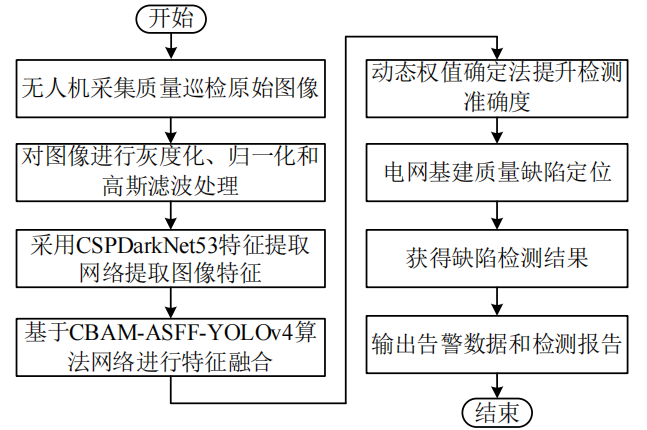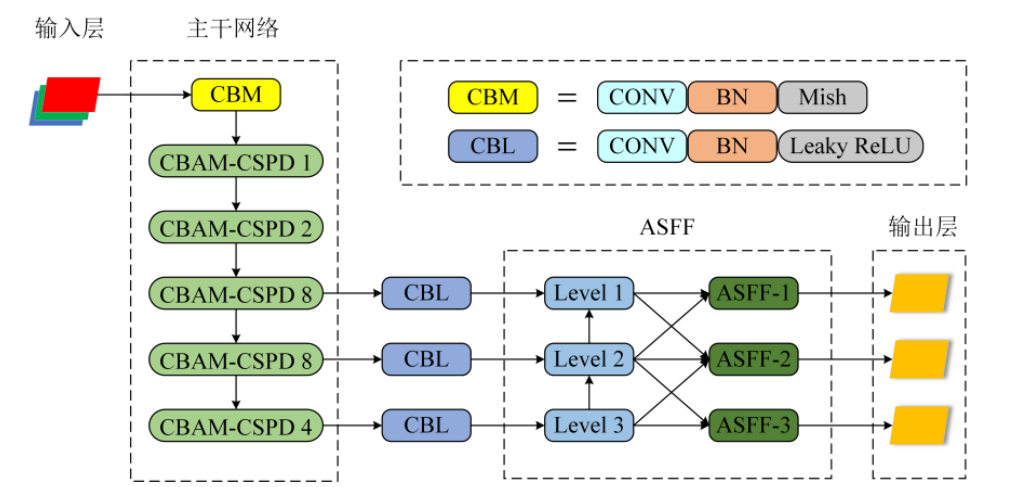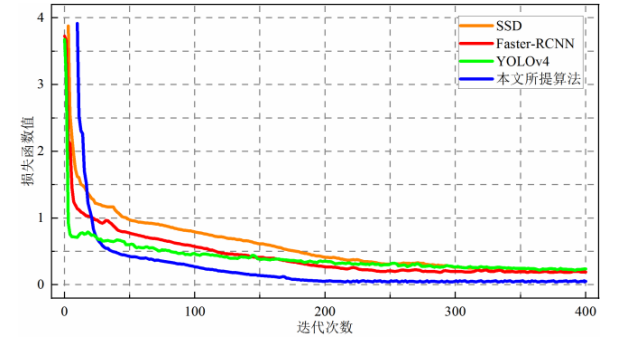In modern power grid infrastructure projects, ensuring the quality of construction is critical to maintaining safety and operational stability. Traditional manual inspections face significant challenges due to weather conditions, terrain, and the complexity of the environment. To address these challenges, intelligent detection methods utilizing drones and AI-based algorithms are gaining traction. This article presents a novel approach for grid infrastructure quality detection using CBAM-ASFF-YOLOv4, which integrates Adaptive Spatial Feature Fusion (ASFF) and Convolutional Block Attention Module (CBAM) with YOLOv4 to improve detection accuracy and speed.
Key Contributions
-
Improved Feature Fusion with ASFF:
- One of the main innovations in this method is the use of ASFF (Adaptive Spatial Feature Fusion), which enhances the PANet used in YOLOv4’s neck network. ASFF improves the fusion of features from different scales, effectively addressing the challenge of variable target sizes standard in grid infrastructure quality inspections.
-
Enhanced Small Target Detection with CBAM:
- Introducing the Convolutional Block Attention Module (CBAM) further refines the detection capabilities, particularly for small targets. CBAM optimizes feature extraction by applying channel and spatial attention, ensuring that the most relevant features are emphasized for quality detection.
-
Dynamic Weighting for Loss Reduction:
- To reduce the loss during accurate detection, a dynamic weighting method was introduced to adjust the contribution of each feature layer. This method improves the model’s sensitivity to minor and complex defects that are often overlooked in traditional detection models.
Algorithm Workflow
The proposed intelligent detection method follows a structured approach:
-
Data Preprocessing:
- RGB images captured by drones are preprocessed, including grayscale conversion, normalization, and Gaussian filtering to remove noise and interference.
-
Feature Extraction:
- The processed images pass through the DarkNet53 backbone network, which extracts features at multiple scales and ensures that large and small targets are effectively captured.
-
Defect Identification and Localization:
- The extracted features are passed through the enhanced YOLOv4 network with ASFF and CBAM. This model identifies and locates defects within the images, accurately pinpointing locations and types of defects in the power grid infrastructure.
-
Dynamic Weight Adjustment:
- The dynamic weight adjustment technique fine-tunes the importance of each detection result during the backpropagation phase, reducing the impact of false positives and improving the overall precision of the detection.
-
Output and Reporting:
- The final step involves generating detection reports with alarm data indicating the type and location of defects, facilitating quick decision-making for maintenance teams.

Figure 2 Intelligent detection method flow of power grid infrastructure quality based on CBAM-ASFF-YOLOv4
Simulation Results
The proposed method was tested on a dataset obtained from drone inspections of power grid infrastructure. The dataset includes defects in equipment such as insulators, tower poles, and grounding lines. The results showed the following performance metrics:
- Accuracy: 93.46%
- Recall: 86.72%
- Mean Average Precision (mAP): 92.81%
- Detection Speed: 41.16 FPS
Comparison with Other Algorithms
Compared to commonly used algorithms such as SSD, Faster-RCNN, and YOLOv4, the CBAM-ASFF-YOLOv4 approach outperformed them in accuracy and speed. The detection accuracy was improved by 5.67%, 4.62%, and 2.53%, respectively, while the detection speed increased by 20.81%, 42.42%, and 7.64%.
Advantages:
- Higher Detection Accuracy: The model achieved a higher detection accuracy for minor and complex defects in power grid infrastructure.
- Improved Speed: The method was faster than other algorithms, processing images at 41.16 frames per second (FPS), ensuring real-time monitoring and quick feedback.
- Reduced Loss in Detection: Dynamic weight adjustment reduces the loss during training, leading to better convergence and faster model performance.
Conclusion
The proposed CBAM-ASFF-YOLOv4 method significantly enhances the performance of grid infrastructure quality detection. Improving the feature fusion process, increasing the model’s ability to detect minor defects, and adjusting the weights provide a more efficient and accurate solution for the real-time inspection of electrical grid infrastructure. The results demonstrate that it is highly effective in handling complex backgrounds and identifying hidden defects, offering a promising tool for the future of power grid maintenance and monitoring.

